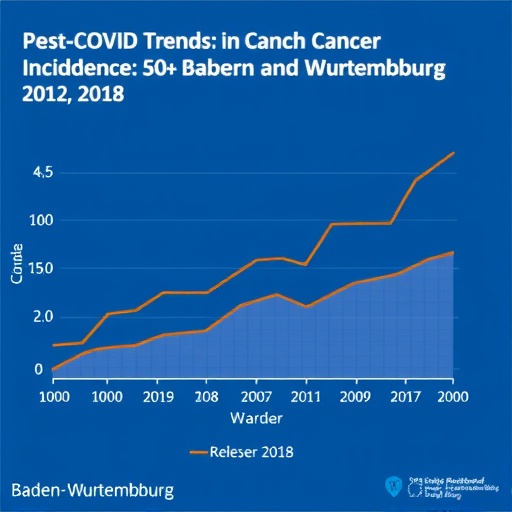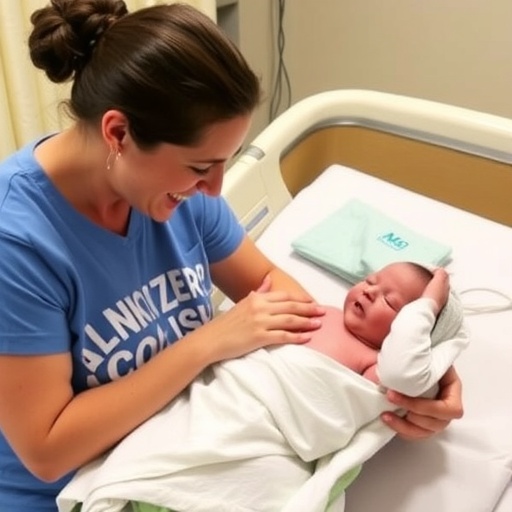
In an era where patient autonomy and shared decision-making have become cornerstones of modern oncology, a groundbreaking study from China sheds new light on the dynamic interplay between cancer patients, their doctors, and family members. Published in the highly regarded journal BMC Cancer, the research meticulously explores the congruence between cancer patients’ preferred roles and their actual experiences in medical decision-making. This investigation is particularly resonant in the context of Chinese cultural norms, which often emphasize familial involvement in healthcare decisions, highlighting unique challenges and opportunities within patient-centered care.
The study employed an adapted version of the Control Preferences Scale to delineate the roles patients prefer to adopt during consultations and the roles they actually experience. This instrument categorizes decision-making involvement into patient-led, shared, or doctor-led roles. By engaging 1264 cancer patients across multiple clinical sites, the research team captured a comprehensive portrait of decision-making dynamics across various cancer types, enabling granular analysis of how preferences correlate with on-the-ground realities.
Notably, the data revealed a nuanced pattern in patient engagement. Roughly 44% of respondents expressed a preference for taking the lead in decisions about their treatment, while 40% favored a collaborative or shared decision-making model alongside their doctors, and a minority, approximately 16%, preferred to defer decisional authority to their physicians. Intriguingly, respondents reported even higher actual engagement levels in patient-led decision-making, with over 56% experiencing autonomy in their treatment choices, suggesting a somewhat proactive healthcare environment or possibly a mismatch in patient perceptions.
.adsslot_ihtJ7Al1rD{width:728px !important;height:90px !important;}
@media(max-width:1199px){ .adsslot_ihtJ7Al1rD{width:468px !important;height:60px !important;}
}
@media(max-width:767px){ .adsslot_ihtJ7Al1rD{width:320px !important;height:50px !important;}
}
ADVERTISEMENT
The concordance between what patients wanted and what they experienced was categorized as moderate, with a kappa coefficient of 0.41. This statistic indicates that, although there is some alignment between preferred and achieved decision-making roles, a significant portion of patients encountered discrepancies. Such findings underscore ongoing gaps in communication and support, where patients’ desires for involvement are not fully realized or recognized during clinical interactions.
Family involvement emerged as a major theme, aligning with prevalent cultural paradigms in China where families often serve as fiduciaries and emotional pillars in the patient journey. Over three-quarters of patients preferred shared decision-making involving family members, and nearly 71% reported experiencing this collaborative approach. This congruence emphasizes the critical role families play as mediators, advocates, and co-decision-makers, challenging the simplistic Western binary of patient autonomy versus physician paternalism.
Cancer type further stratified patients’ experiences and preferences. Breast cancer patients demonstrated a statistically significant tendency to adopt more passive roles in decision-making. This passivity, potentially reflective of demographic variables such as gender norms or disease-specific psychosocial factors, points to complex interrelations between illness identity and agency. Conversely, uterine cancer patients often experienced less active decision-making roles than they preferred, highlighting a discrepancy that could negatively impact treatment satisfaction and psychological outcomes.
The research’s cross-sectional design, spanning multiple clinical sites, lends robustness and generalizability to the findings, revealing systemic patterns rather than isolated practices. It signals a need for clinicians to cultivate bespoke communication strategies that acknowledge varying patient desires and familial dynamics. Emphasizing the triadic relationship between patient, physician, and family members stands to enhance care quality and align treatment planning with individual values.
This study also prompts reflection on the cultural underpinnings shaping decision-making. Unlike Western models that often prioritize individual autonomy, Chinese healthcare incorporates Confucian values promoting family cohesion and collective responsibility. Such cultural nuances necessitate adaptive frameworks in patient engagement that transcend generic shared decision-making models and instead respect cultural context, balancing individual preferences with family input.
From a methodological standpoint, the use of multivariate logistic regression allowed the researchers to control for confounding variables such as cancer type and family involvement, clarifying their distinct impacts on decision-making congruence. This analytical rigor strengthens the causal inferences and supports targeted interventions aimed at improving patient-centered care within oncology.
Clinicians and healthcare policymakers should interpret these findings as an impetus to refine decision-making protocols, ensuring they accommodate patients’ desires to participate actively or collaboratively in their cancer treatment plans. For populations like uterine cancer patients, special attention must be paid to bridging gaps between expected and actual involvement, perhaps through enhanced counseling or decision aids.
Furthermore, the high prevalence of shared decision-making involving families raises ethical considerations regarding confidentiality, consent, and patient autonomy. Structured communication pathways that include families while safeguarding patient rights must be developed and integrated into oncology practice guidelines.
This pioneering study from China enriches the global dialogue about patient empowerment in oncology by illuminating the complex, culturally embedded realities patients face. It advocates for nuanced, culturally sensitive approaches that reconcile medical expertise, patient will, and familial influence, ultimately striving to optimize treatment outcomes and patient satisfaction.
The implications extend beyond China, serving as a call to international oncology communities to reevaluate and personalize decision-making frameworks in diverse sociocultural milieus. Embracing such complexity is critical as the oncology field moves toward precision medicine not only in biology but also in communication and care delivery.
To conclude, this research underscores that while the aspiration for patient-centered decision-making is widely embraced, the pathways to its realization are multifaceted, culturally contingent, and necessitate ongoing attention. By understanding the divergences and congruences between cancer patients’ preferred and experienced decision roles across different cancers and cultural settings, healthcare providers can catalyze a transformative shift toward truly participatory oncology care.
Subject of Research: Cancer patients’ preferred and experienced decision-making roles in collaboration with doctors and family members in China.
Article Title: Congruence of cancer patients’ desired and achieved decision-making roles between self, doctor and family: a cross-sectional multi-site survey.
Article References:
Wang, D., Yan, S., Fan, M. et al. Congruence of cancer patients’ desired and achieved decision-making roles between self, doctor and family: a cross-sectional multi-site survey. BMC Cancer 25, 1120 (2025). https://doi.org/10.1186/s12885-025-14510-4
Image Credits: Scienmag.com
DOI: https://doi.org/10.1186/s12885-025-14510-4
Tags: cancer patient decision-making roleschallenges in patient-doctor communicationChinese healthcare decision-making normsControl Preferences Scale in cancer carecultural influences on patient choicesdecision-making dynamics in cancer treatmentengagement patterns among cancer patientsfamily involvement in healthcare decisionspatient autonomy in cancer treatmentpatient preferences in medical consultationspatient-centered care in oncologyshared decision-making in oncology





